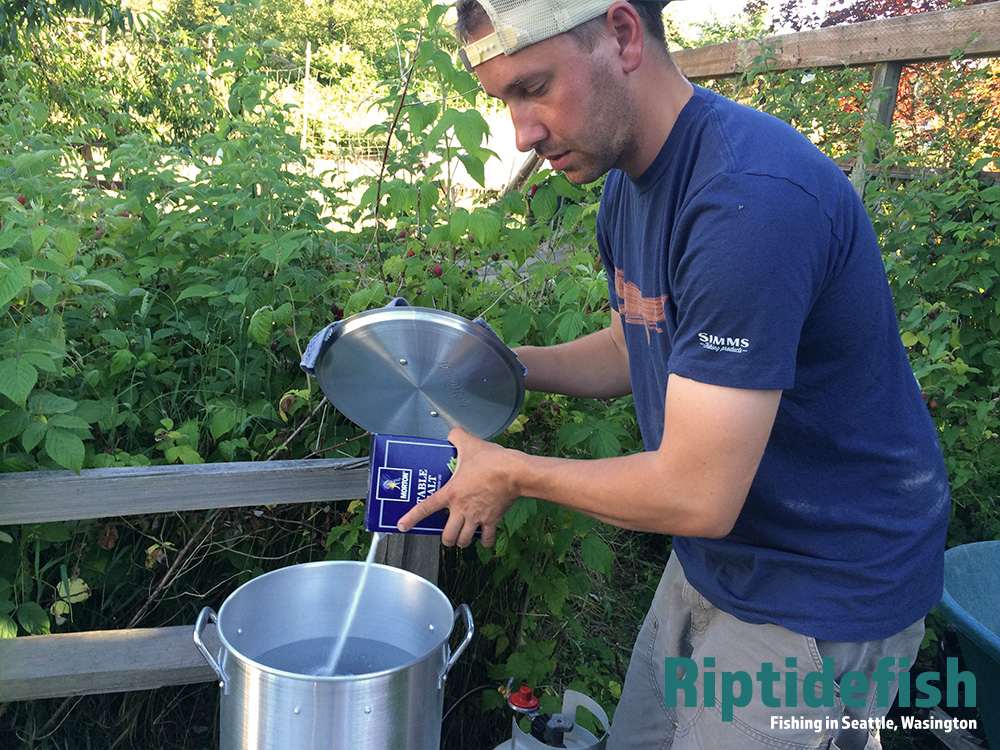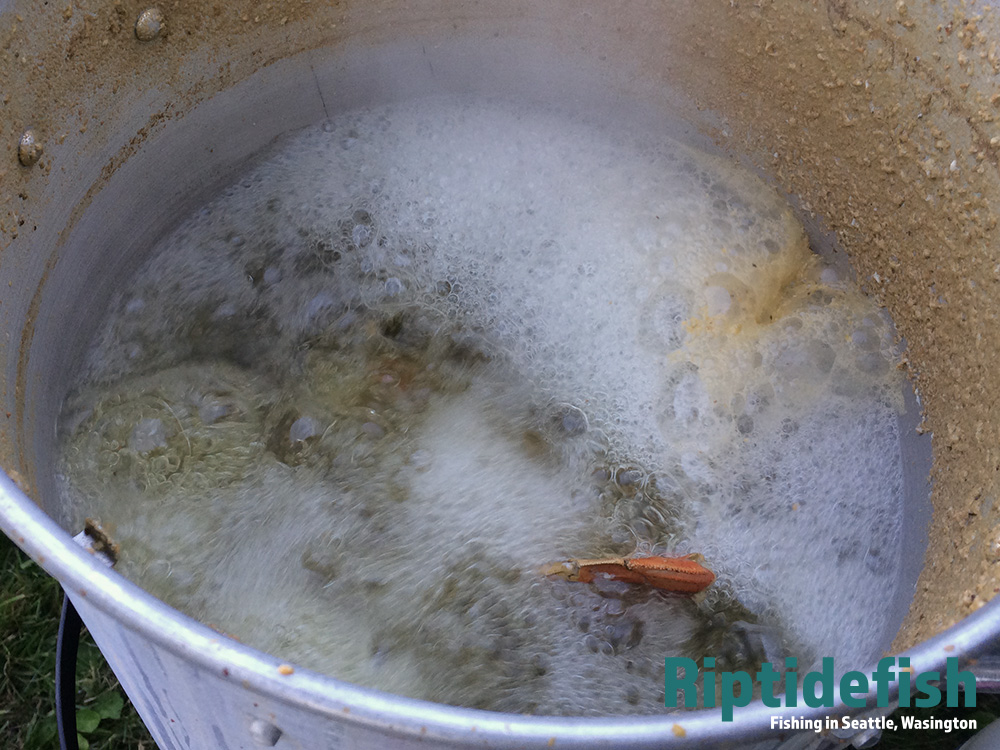As a seafood lover, I adore a tender, juicy crab boil. That sweet, delicate crab meat is so worth the effort of cracking open the shell. However, the trick to achieving crab perfection lies in boiling it just right. Undercook your crab and the meat stays gummy; overdo it and you’ll have rubbery bits throughout So how long should you boil crab to get ideal results? In this comprehensive guide, I’ll cover all the key factors in determining perfect crab boil times
An Overview of Popular Crab Varieties
There are many different species of crabs out there and boil times can vary quite a bit between them. Here’s a quick introduction to some of the most common types you’ll encounter
-
Blue crab – These have a beautiful blueish shell and sweet, delicate meat. They are smaller, averaging 4-6 inches across.
-
Dungeness crab – Named after a fishery area in Oregon, these are a Pacific Northwest specialty. They have sweeter meat than blue crabs.
-
King crab – The largest crabs, with legs spanning 5 feet! Favorite for their big chunks of firm, tasty meat.
-
Snow crab – Found in colder northern waters prized for their clustered legs full of tender meat.
-
Dungeoness crab – A smaller variety with flaky meat found in tropical regions like Florida.
Why Boiling is the Best Cooking Method
Steaming, grilling, and baking can all produce tasty crab results. However, boiling reigns supreme for several reasons:
- Boiling rapidly kills bacteria and cooks the crab safely.
- It allows flavorings like Old Bay seasoning to infuse the meat.
- The high heat firms up the texture pleasantly.
- Simple boiling equipment – just a pot, burner, and strainer.
When boiling crab, it’s important to use ample water and high heat. Use around 8 cups of water per 1 lb of crab. Bring it to a rolling boil before adding your crab. Now let’s get into the ideal boil times.
Suggested Boil Times by Crab Type
As you’ll see, recommended boil durations cover quite a wide range depending on crab size and variety. Here are the general guidelines:
Blue Crab
- Small (3-4 inches): 6 to 8 minutes
- Medium (5 inches): 8 to 12 minutes
- Large (6+ inches): 10 to 15 minutes
Blue crabs change color from greyish to bright orange when cooked. Time it so they switch color just as you remove them.
Dungeness Crab
- Small (1-1.5 lbs): 11 to 13 minutes
- Medium (1.5-2 lbs): 13 to 15 minutes
- Large (2-3 lbs): 15 to 18 minutes
Dungeness crabs tend to be larger and take a bit longer than other varieties.
King Crab
- Legs: 6 to 8 minutes
- Claws: 8 to 10 minutes
- Sections: 10 to 12 minutes
Target times under 10 minutes for king crab legs or claws. Cook bodies for 10-12 minutes.
Snow Crab
- Small clusters: 3 to 4 minutes
- Legs: 5 to 7 minutes
- Sections: 7 to 10 minutes
Snow crab cooks very quickly. Legs and clusters take 5-7 minutes, while bodies need 7-10.
Dungeoness Crab
- Small (1-1.5 lbs): 6 to 8 minutes
- Medium (1.5-2 lbs): 8 to 10 minutes
- Large (2-3 lbs): 10 to 12 minutes
Dungeoness crabs boil faster than Dungeness. Shoot for 6-8 minutes for smaller ones.
Handy Tricks for Gauging Doneness
Timing alone doesn’t guarantee perfectly boiled crab. Here are two simple ways to double-check that your crab is cooked just right:
- The shell turns from grey/blue to bright orange when done.
- Carefully try pulling off a leg. It should twist off cleanly when cooked through.
Don’t rely on timing alone. Use visual shell clues and test pulls to confirm your crab is ready.
Step-by-Step Boiling Instructions
Here is a quick step-by-step guide to flawlessly boiled crab:
-
Add 8 cups water per 1 lb crab to a large pot. Add seasonings if desired.
-
Bring water to a rolling boil over high heat.
-
Gently add live crabs and put on the lid.
-
Boil for the recommended time based on variety and size.
-
Check for doneness cues like color change and loosened legs.
-
Use tongs to transfer cooked crabs to a bowl filled with ice to stop further cooking.
And that’s it – perfectly cooked crab ready for cracking and dipping in melted butter!
Pro Chef Tips for Maximizing Flavor
Here are some pro tips to take your boiled crabs from great to extraordinary:
-
Add Old Bay, crab boil spice, garlic, lemon, and/or thyme to the water for extra flavor.
-
Chill cooked crabs quickly in an ice bath to lock in moisture.
-
Clean and quarter the crabs prior to boiling for faster, more even cooking.
-
Finish by deep frying boiled crabs for 2 minutes to crispy up the shell.
-
Add a sauce like drawn butter, aioli, or creamy mustard for dipping.
With the right cooking time and a few flavor boosts, your crab will be the star of the table!
Common Boiling Mistakes to Avoid
It’s easy to over or undercook your crabs if you’re not careful. Here are some key errors to watch out for:
-
Pot too crowded – This slows the boil and makes meat gummy. Give them ample room.
-
Water not at a rolling boil – You need high heat for ideal texture.
-
Checking doneness too late – Set a timer and check at minimum time.
-
Boiling too long – This toughens the meat. Better to err underdone.
-
Forgetting an ice bath – Ice stops the cooking so meat stays tender.
Be mindful of these pitfalls and your crab success rate will skyrocket.
Enjoying Fresh Crab All Season
One downside to boiled crab is that it has a short shelf life. For the best flavor and texture, eat them within a day or two. Here are some ways to get your fill of fresh crab:
-
Seek out in-season crabs at their peak. This varies by region and type.
-
Buy them live or raw on ice – never pre-cooked or frozen.
-
Cook up the amount needed then keep leftovers to a minimum.
-
Don’t reheat boiled crab – add leftover meat to salads or dips instead.
With the right cooking time and a few simple precautions, you can master cooking flawless boiled crab any time of year. Whether you’re preparing for a summer crab feast or just a small weeknight meal, follow these guidelines for tender, juicy crab meat with the perfect snap every single time.

Freshly caught Dungeness Crab is classic Pacific Northwest cuisine.
Are you ready to learn how to cook Dungeness Crab? During the Seattle summer, my favorite ways to spend a day is crabbing on Puget Sound in the morning and inviting over friends and family for a crab boil in the evening. Those calm summer days on the water make crabbing here pretty trouble-free. And the bounty we catch is usually enough to feed at least a couple people. Cooking Dungeness Crab is easy and a great way to share the whole hunter-gatherer vibe with others. You don’t need much equipment to cook crab, add in a little prep time and you are there!
Preparing For a Crab Boil
Make sure you have everything on your checklist in order. Mix in the salt and any seasoning to the water, fire up the burner and get the water to a rapid and rolling boil.

Once the water is at a rapid and rolling boil you are ready to add the crab! Adding the Dungeness Crab to the boil will cause the water temp to drop significantly. I like using a large pot with a lot of water because I can drop in a few crab without having the water temp drop too much. Timing is everything. I usually give the crab 12 to 15 minutes in a boil. If the boil dies when I drop in the crab and it takes a couple minutes to get going again I will give it a little longer. Once you go through this process a few times you will have a good feel for it.

How Long Do I Boil Crab? : Seafood & Outdoor Cooking
FAQ
How long to boil 1.5 lbs of crab legs?
2-3 clusters per 1.5lbs. How to reheat Snow Crab Clusters: Add two cups of water and one Tbsp of salt and bring to a boil. Place the crab legs in the pot on a rack over the boiling water. When the water starts to boil again, place a lid on the pot and and cook for about 6 mins.
How do I tell if my boiled crab is done?
Cook the crabs for about 18-20 minutes, depending on size. The crabs are done when they turn orange and the meat flakes when tested with a fork.Jul 24, 2018
